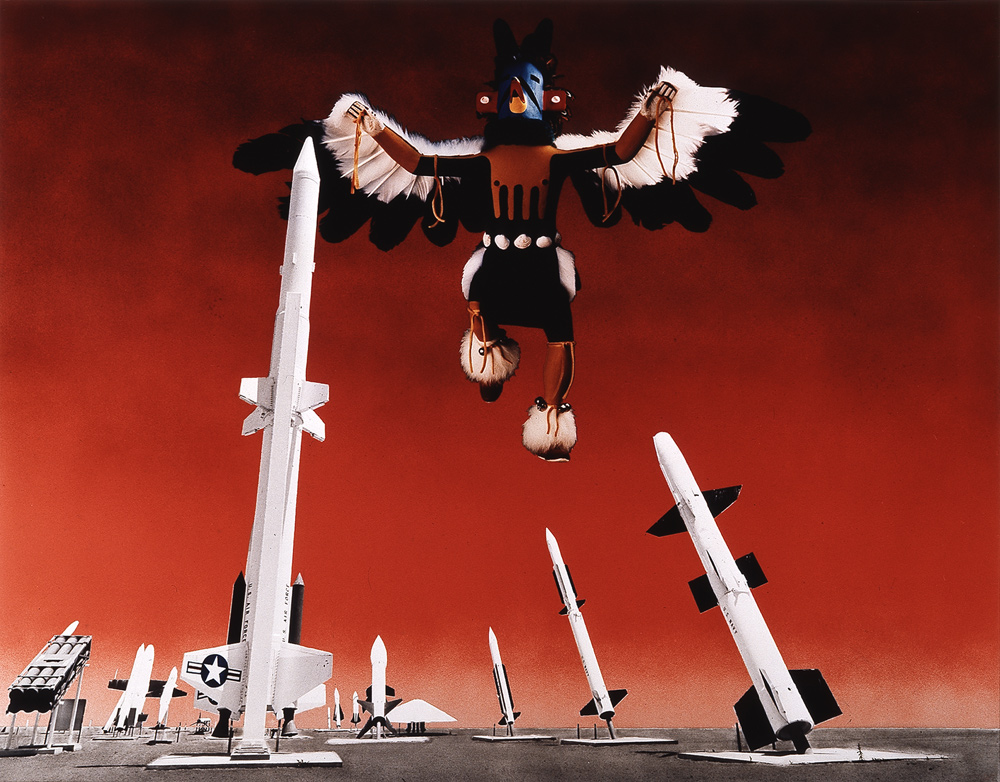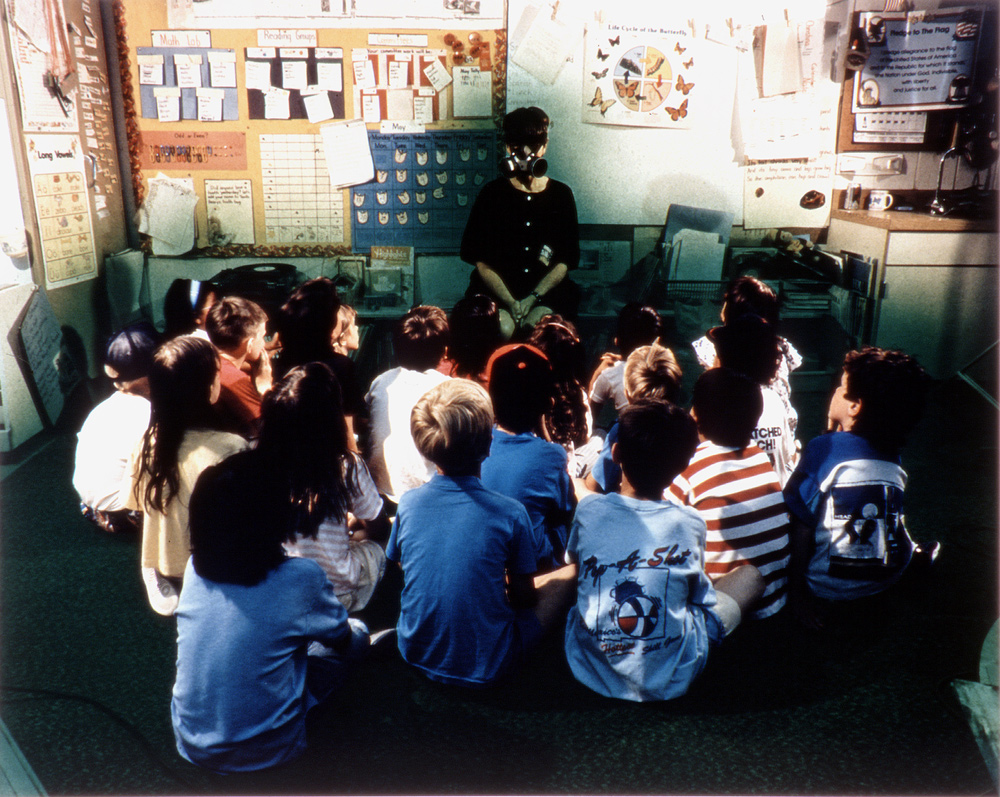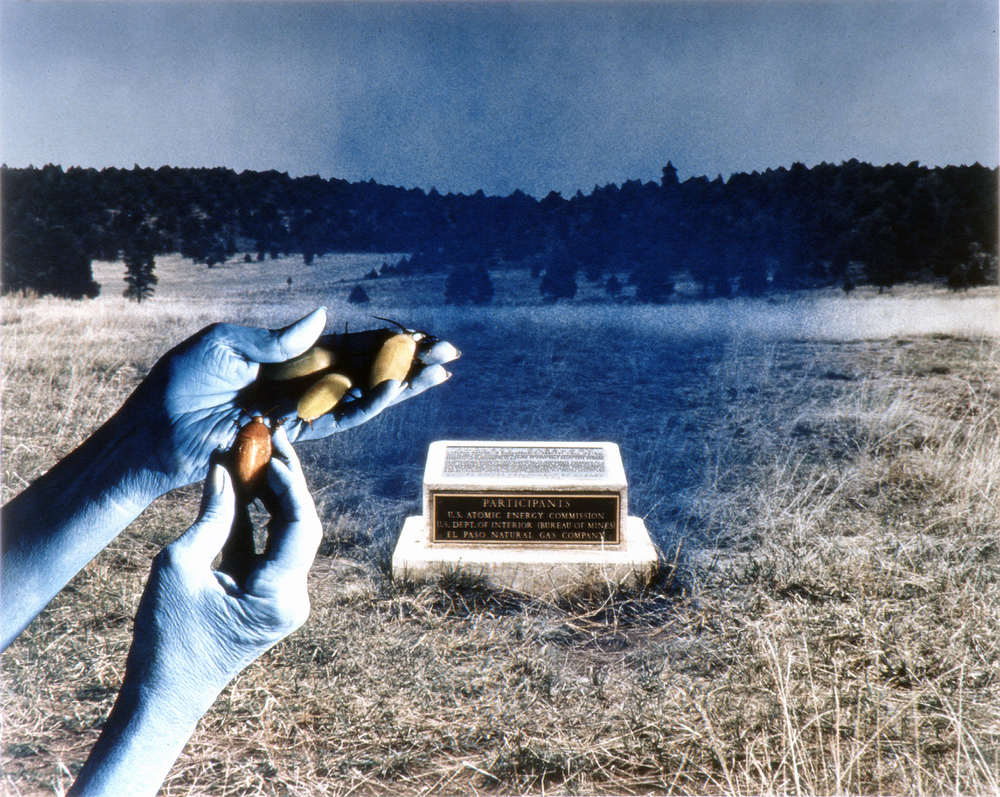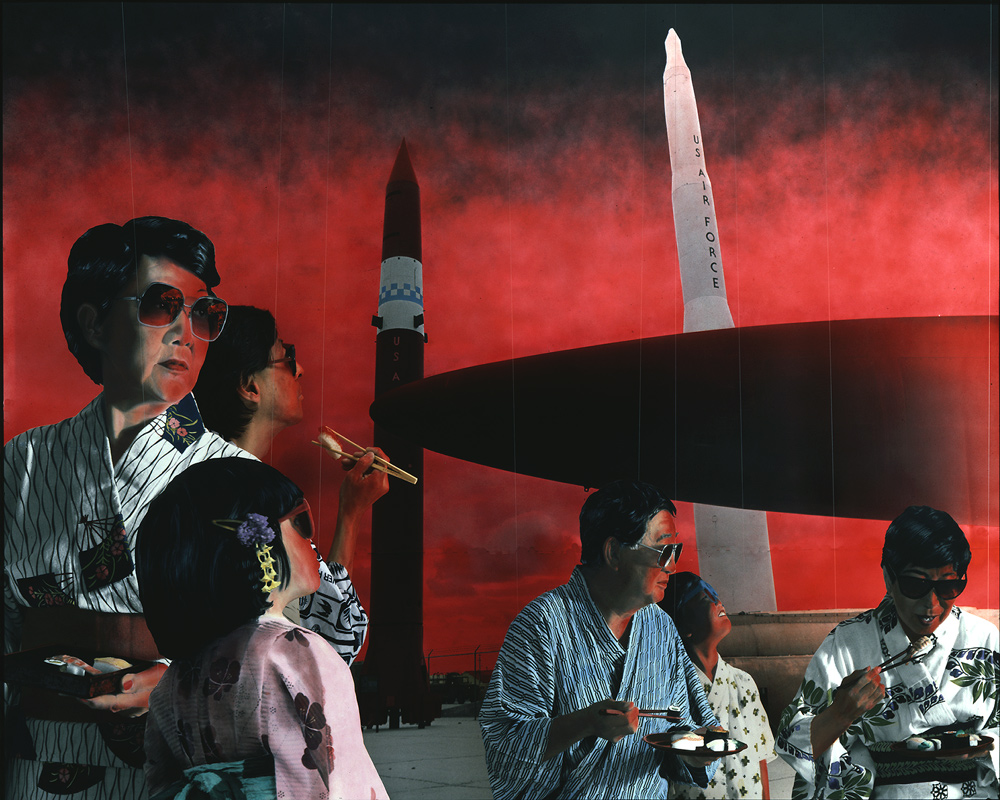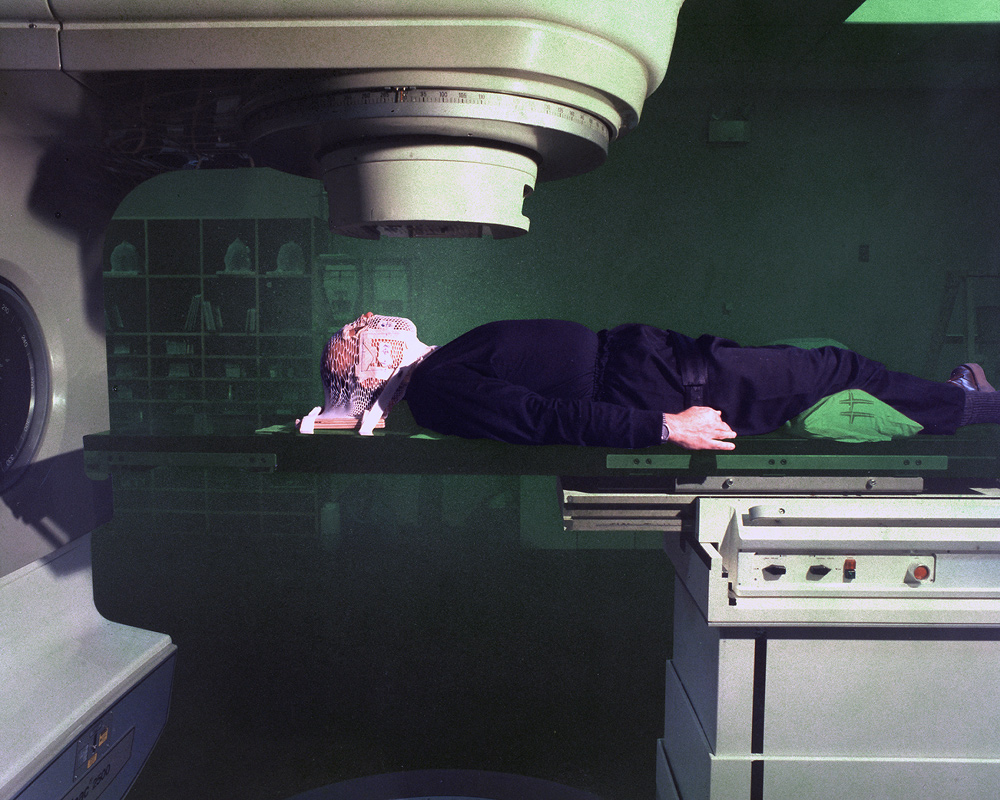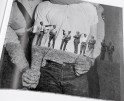Atomic Reactions: Patrick Nagatani: Nuclear Enchantments
“Like the macabre yet jewel-like images from medieval books of hours dealing with the Office of the Dead, I point a boney finger at the contemporary dance of death we are on the verge of joining.” —Patrick Nagatani (1945-2017)
Nuclear Enchantments, Patrick Nagatani’s 1988-1993 series of theatrical, darkly comedic constructions, express a wild range of nuclear absurdity, rage, fear and indifference, collaged against the landscapes of New Mexico. When he moved to Albuquerque in 1987 from Los Angeles, he brought a meticulous approach to constructing realities from his job as a set designer. In Nagatani’s images, New Mexico becomes the stage set for the alarming nuclear drama that we are still enacting.
Nagatani’s technique is layered and laboriously arranged for the camera, without digital manipulations. He built hundreds of accurate scale models of bombers and jets and suspended those from obvious filaments into his scenes—innocent toys masking deadly potential. His earlier Polaroid collaborations in the 1980s with Andree Tracey were large scale constructions with elaborate assemblages of actors, painted backgrounds, suspended props, and heightened, colorized lighting. Nuclear Enchantments carries those approaches forward, layering figures Nagatani stages and photographs, printing and pasting onto cardboard cutouts, placing them against other photographs or painted backdrops, enhancing color with Marshall’s Oils painted on the prints.
Patrick Nakatani was a master of symbolism. He reconnected the powerful mythic protectors from Japanese and Native American cosmologies by collaging them back on the tainted land. He did extensive preparatory research into the nuclear-military-industrial-cultural complex that pervades New Mexico, combining the tragic and the absurd in depictions of military might and overlooked environmental consequences . He left a photographic language for the post-nuclear age.
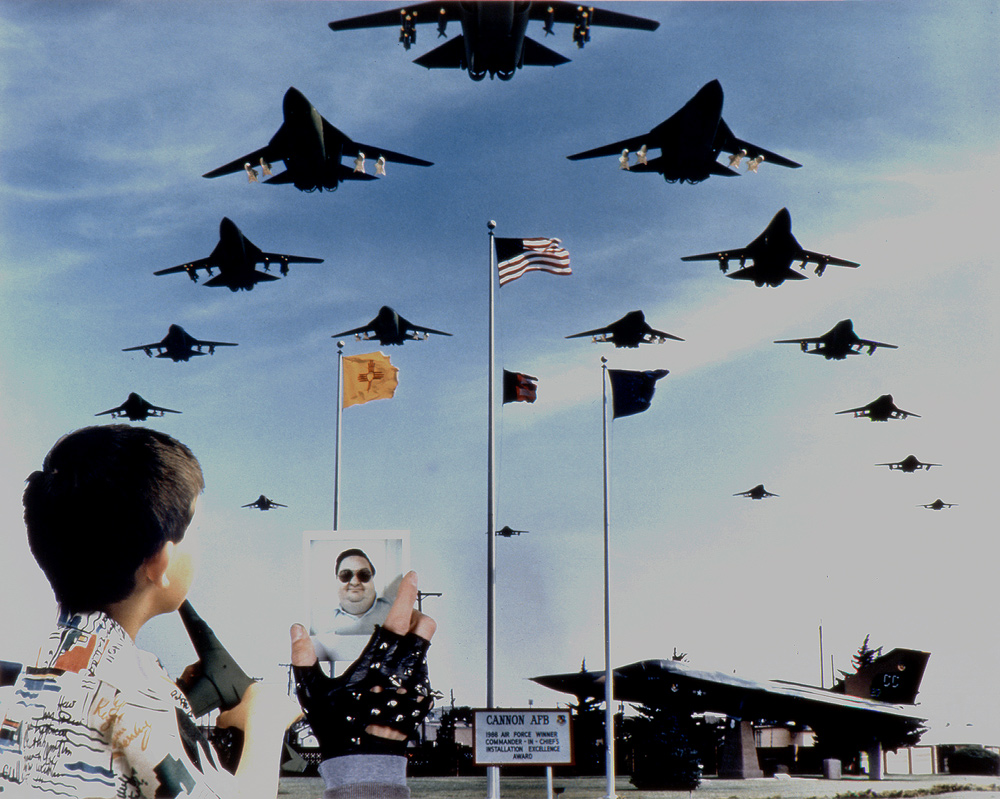
‘Fat Man and Little Boy’, F-111D’s, 27th Tactical Fighter Wing, Cannon Air Force Base, near Clovis, New Mexico, 1990. ©Patrick Nagatani
Artist Statement
There are forty images in this body of work.
Since my arrival in New Mexico, twenty three years ago [he arrived in 1987], I have become increasingly aware of the various activities in the scientific, military, mining, medical, etc. industries here in my home state. The historical as well as the contemporary development of the nuclear industry as well as its impact on this state has been my prime emphasis of investigation. A concern of this work is to promote a dialogue with and about the contemporary/historical landscape of the state that contains the most extensive nuclear weapons research, management, training, and testing facilities and organizations in the United States.
My intentions are to raise public consciousness about the effects of New Mexico’s nuclear industry which continues to grow despite the damage it has already caused and will continue to bring to the state. The series, Nuclear Enchantment, attempts to awaken the many New Mexicans who still believe nuclear power poses no threat and that defense spending promotes the economy. Culturally and geographically connected to Mexico, it is perceived by the elite powers as a place that can be abused and even reduced to rubble.
Are we a society so blinded by the powers of science that we will continue to support a destructive industry rather than seeking alternative solutions? Many of the photographs in Nuclear Enchantment are of actual sites presided over by a cast of ancient mythic figures. I hope that they are captivating and enigmatic. I want them to remind us of the spiritual poverty of the technical age. In some of the work I use figures from the great nineteenth century Japanese woodblock artist Hiroshige whose art commented on Japan’s transition from ancient Shintoism to Westernization – a path that ultimately led to Hiroshima.
In my work I intentionally show a leveled world. Polluted skies, contaminated earth, nuclear explosions, fantastic happenings are all seen under the same light (regardless of the effect they have on people that are actually experiencing such events, for whom the events are not images, but occupy their moment); natural, social, mythic, physical, and psychological experiences are all leveled as images. Even I (the artist) becomes an image, a desensitized subject in several of my own installations. The leveling is by choice, as in Baudrillard’s “active indifference”. (Jean Baudrillard, In the Shadow of the Silent Majority, 1983)
My reality and depiction is within this leveled world. It is within what known scientific information we learn and retain. It is within this social/political/economic period of time. And it is within photography, painting, installation, and performance. I hope that Nuclear Enchantment is thought provoking, yet technically brilliant, and richly beautiful despite the grim tidings. Like the macabre yet jewel-like images from medieval books of hours dealing with the Office of the Dead, I point a boney finger at the contemporary dance of death we are on the verge of joining. – Patrick Nagatani

“Fin de Siecle’, Bat Flight Amphitheater, Carlsbad Caverns, New Mexico, 1989 & 1993. ©Patrick Nagatani
Patrick Nagatani’s estate is represented by Andrew Smith Gallery, Santa Fe, New Mexico.
His book, Nuclear Enchantments was published by the University of New Mexico Press, Aluquerque, and is available here. https://www.amazon.com/Nuclear-Enchantment-Eugenia-Parry-Janis/dp/0826312721
Born in Chicago 1945 to Japanese American parents, just days after the bombing of Hiroshima, (his father’s family lived outside Hiroshima), he was child of the nuclear age.
Solo exhibitions include the Japanese American National Museum in Los Angeles in 2011; the Center for Creative Photography in Tucson, Arizona, in 2000; and the Royal Photographic Society in Bath, England, in 1993.
Nagatani was an educator at the University of New Mexico from 1987 to 2007, where he trained numerous photographers among the desert landscape. He authored a novel, The Race: Tales in Flight, about the discovery of 15 British fighter aircrafts buried in Myanmar at the end of World War II. Patrick Nagatani: Living in the Story, a documentary of his life covering 35 years of his art making, is available here: https://patricknagatanilivinginthestory.com/
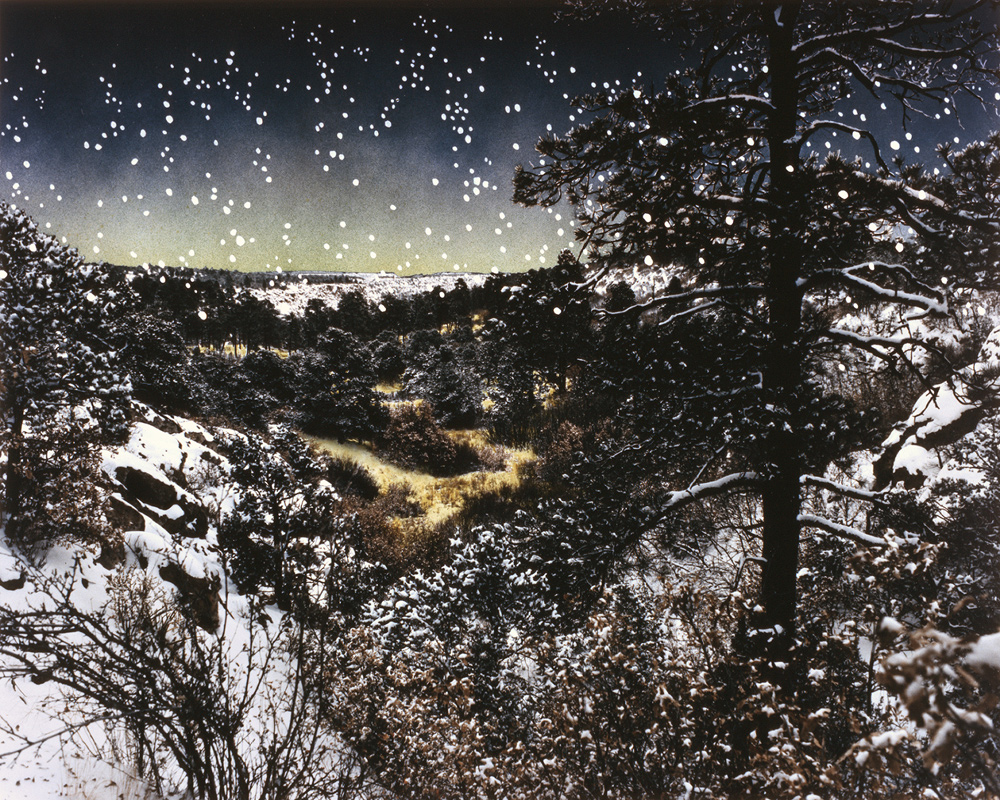
Contaminated Radioactive Sediment, Mortandad Canyon, Los Alamos National Laboratory, New Mexico, 1990 & 1993. ©Patrick Nagatani
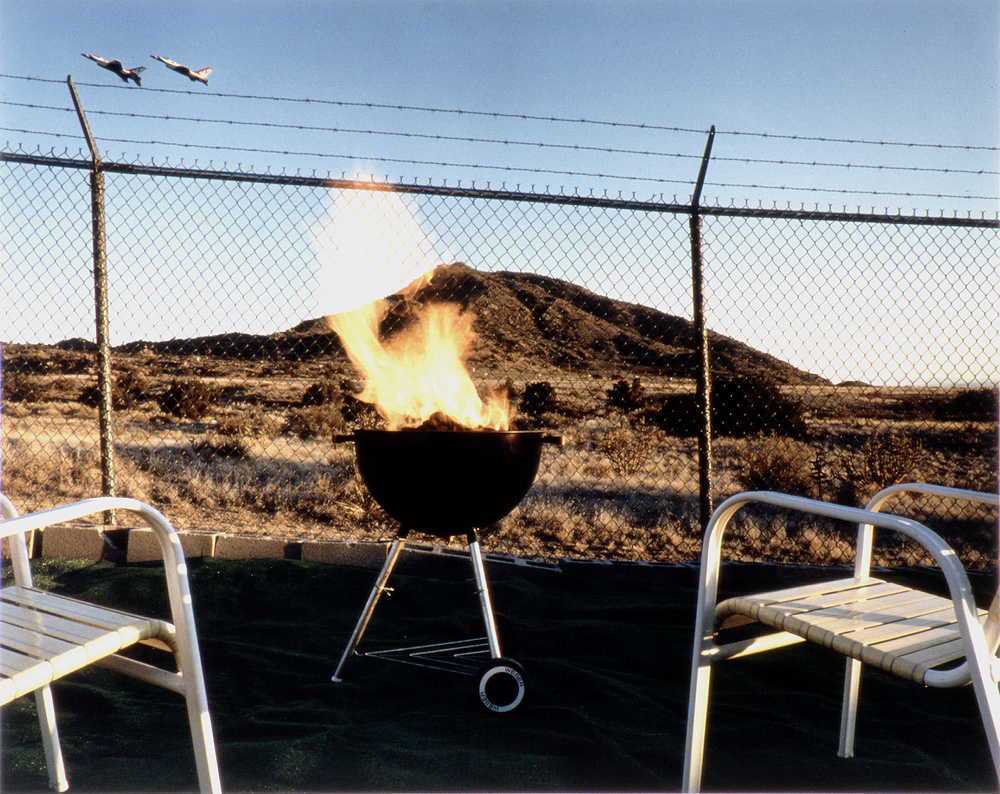
F-16 Falcons (U.S.A.F. Thunderbird Team), Residential Backyard Facing Hollowed-out Manzano Mountain Nuclear Storage Area, Kirtland A.F.B., Albuquerque, New Mexico,1990 & 1993. ©Patrick Nagatani
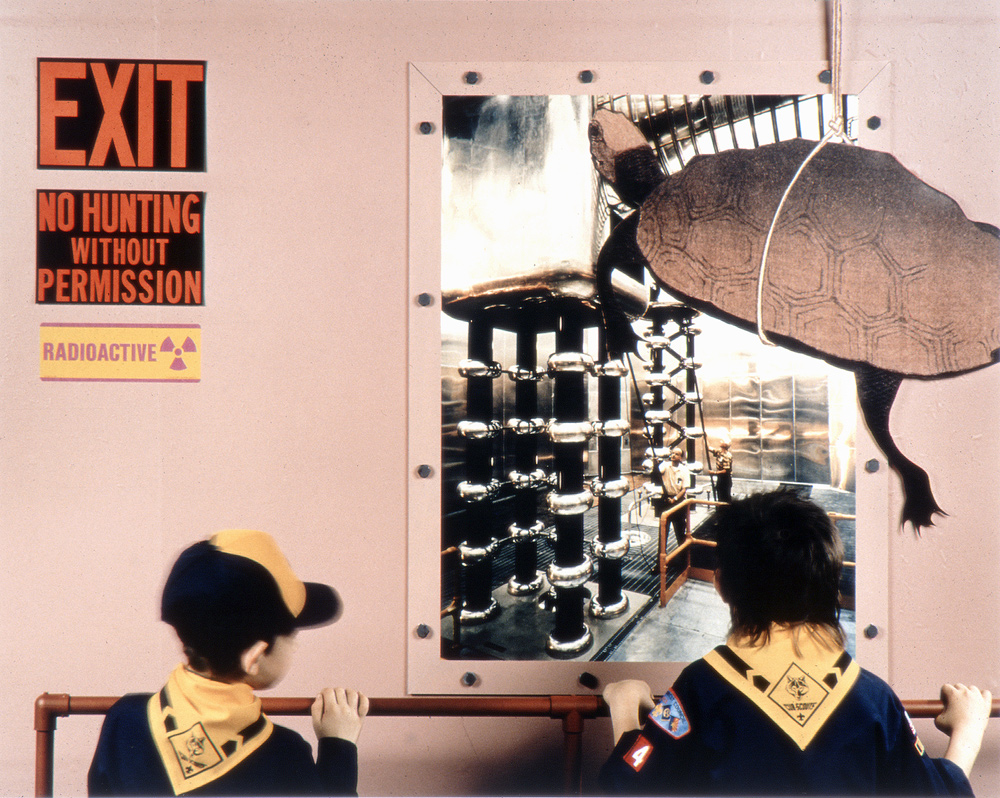
Hojo-e/Releasing of Life, H Injector, LAMPF Accelerator, Clinton P. Anderson Meson Physics Facility, Los Alamos National Laboratory, New Mexico, 1991. ©Patrick Nagatani
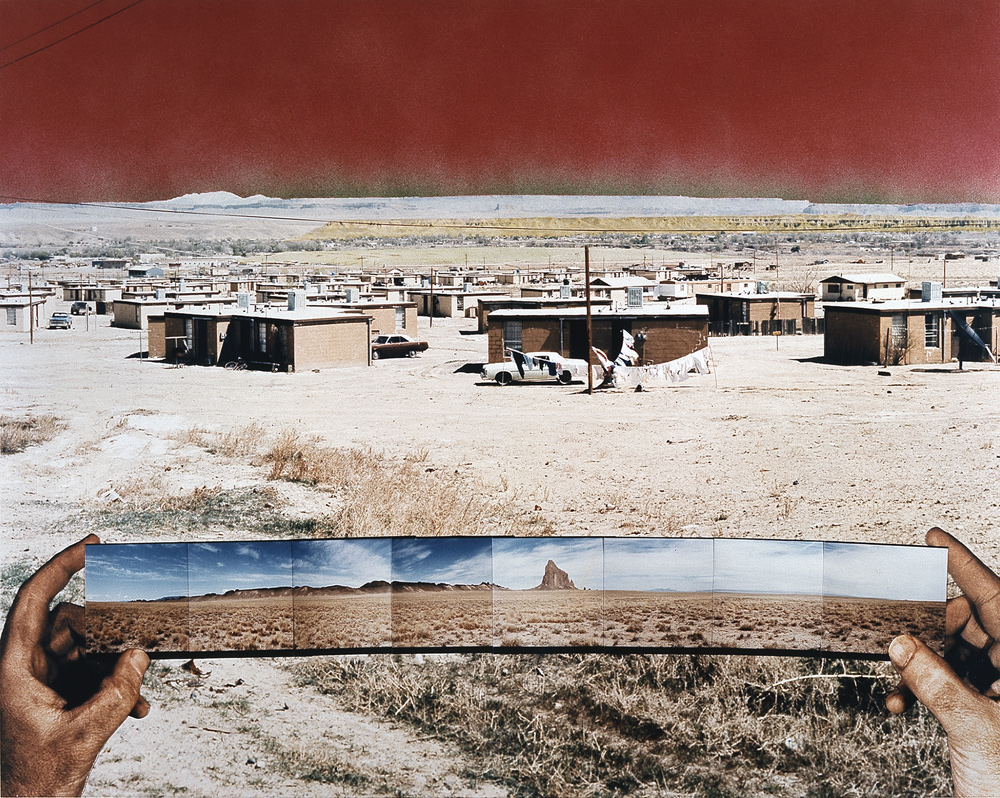
Bida Hi’/Opposite Views; Northeast-Navaho Tract Homes and Uranium Tailings, Southwest Shiprock, New Mexico, 1990 & 1993. ©Patrick Nagatani

Koshare/Tewa Ritual Clowns, Missile Park, White Sands Missile Range, New Mexico, 1989 & 1993. ©Patrick Nagatani
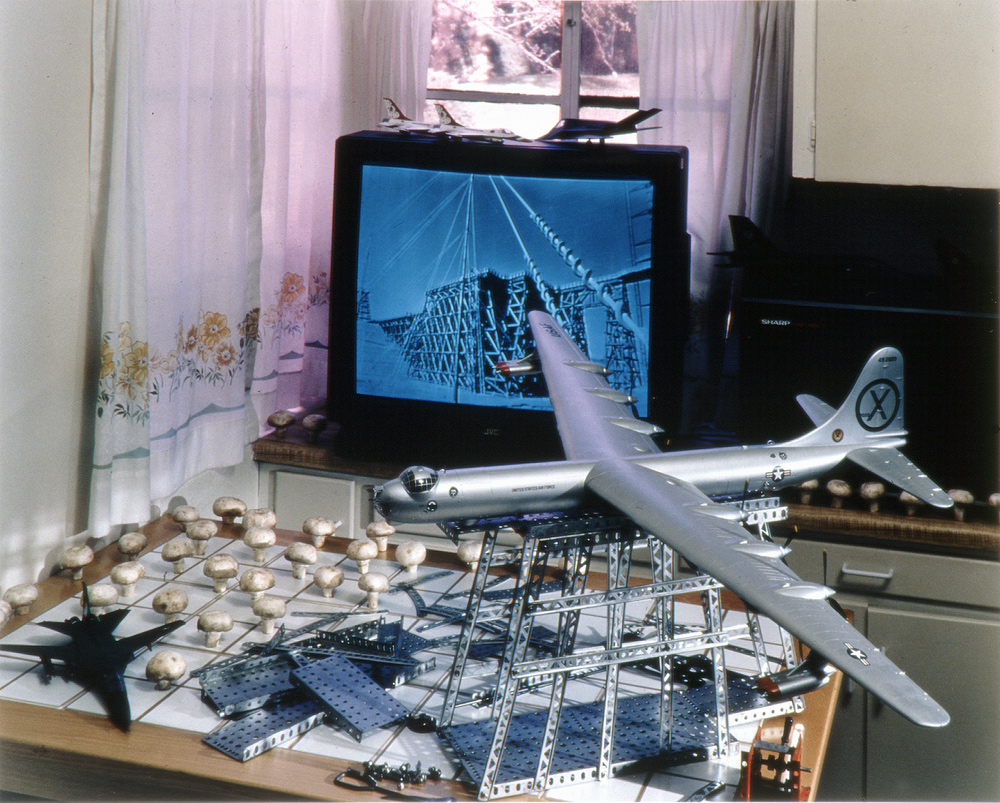
SimulationSimulation, The Trestle, Nuclear Effects (Electromagnetic Pulses) Simulation Facility, Air Force Weapons Laboratory, Kirtland A.F.B., Albuquerque, New Mexico,1990. ©Patrick Nagatani

B-36/Mark 17 H-Bomb Accident (May 22, 1957), 5 1/2 Miles So. of Gibson Blvd., Albuquerque, New Mexico, 1991. ©Patrick Nagatani
Posts on Lenscratch may not be reproduced without the permission of the Lenscratch staff and the photographer.
Recommended
-
Ricardo Miguel Hernández: When the memory turns to dust and Beyond PainNovember 28th, 2025
-
Pamela Landau Connolly: Columbus DriveNovember 26th, 2025
-
KELIY ANDERSON-STALEY: Wilderness No longer at the Edge of ThingsNovember 19th, 2025
-
Jackie Mulder: Thought TrailsNovember 18th, 2025
-
Accidental Evidence: Mike Mandel and Chantal ZakariOctober 22nd, 2025

